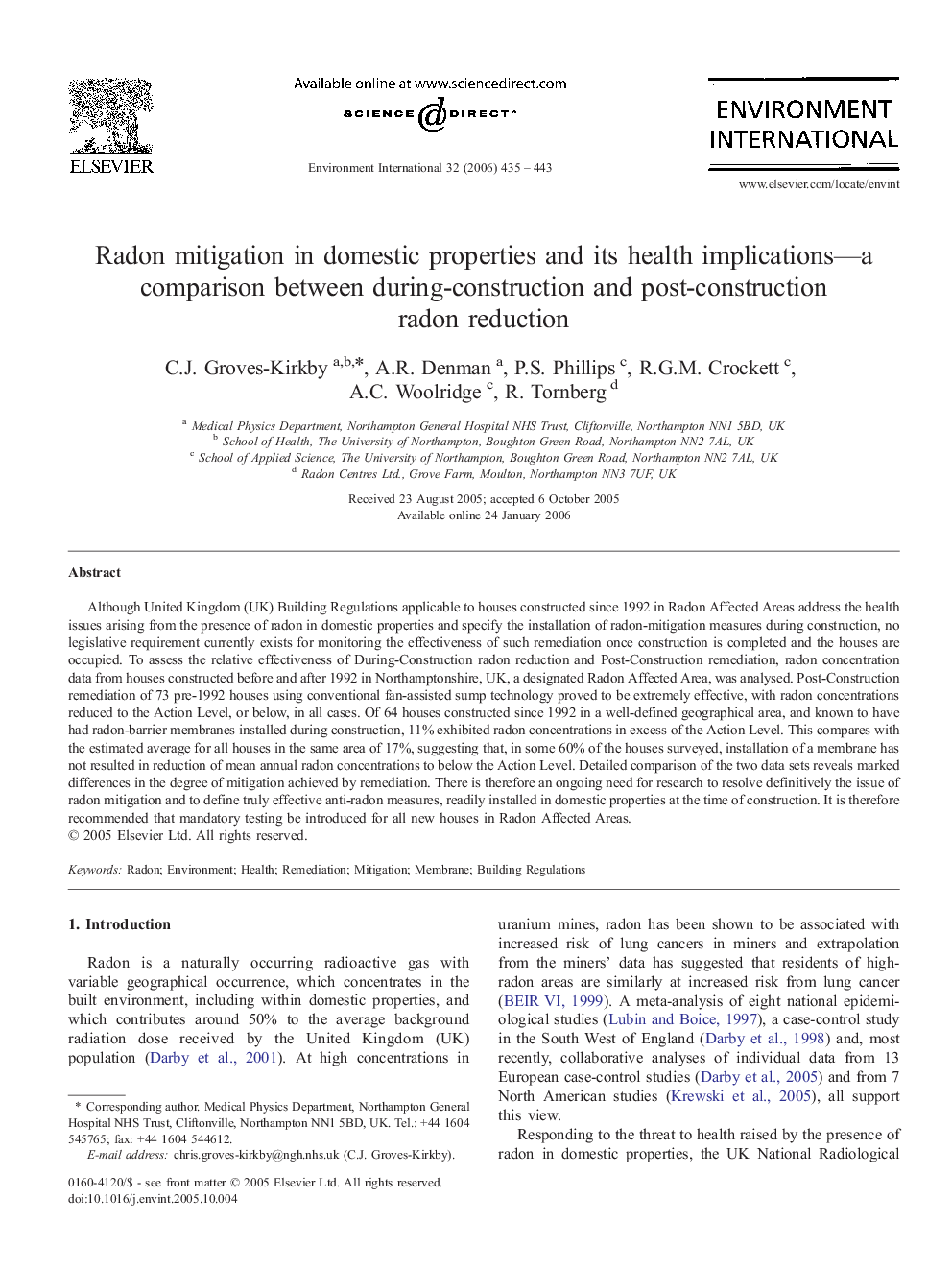| Article ID | Journal | Published Year | Pages | File Type |
|---|---|---|---|---|
| 4424111 | Environment International | 2006 | 9 Pages |
Although United Kingdom (UK) Building Regulations applicable to houses constructed since 1992 in Radon Affected Areas address the health issues arising from the presence of radon in domestic properties and specify the installation of radon-mitigation measures during construction, no legislative requirement currently exists for monitoring the effectiveness of such remediation once construction is completed and the houses are occupied. To assess the relative effectiveness of During-Construction radon reduction and Post-Construction remediation, radon concentration data from houses constructed before and after 1992 in Northamptonshire, UK, a designated Radon Affected Area, was analysed. Post-Construction remediation of 73 pre-1992 houses using conventional fan-assisted sump technology proved to be extremely effective, with radon concentrations reduced to the Action Level, or below, in all cases. Of 64 houses constructed since 1992 in a well-defined geographical area, and known to have had radon-barrier membranes installed during construction, 11% exhibited radon concentrations in excess of the Action Level. This compares with the estimated average for all houses in the same area of 17%, suggesting that, in some 60% of the houses surveyed, installation of a membrane has not resulted in reduction of mean annual radon concentrations to below the Action Level. Detailed comparison of the two data sets reveals marked differences in the degree of mitigation achieved by remediation. There is therefore an ongoing need for research to resolve definitively the issue of radon mitigation and to define truly effective anti-radon measures, readily installed in domestic properties at the time of construction. It is therefore recommended that mandatory testing be introduced for all new houses in Radon Affected Areas.
